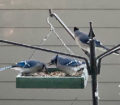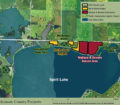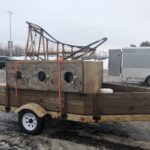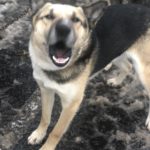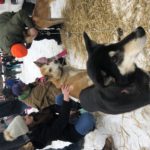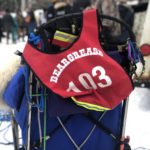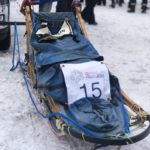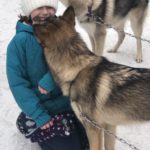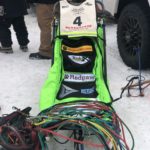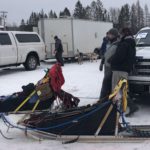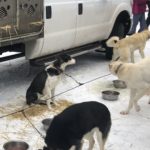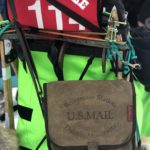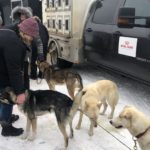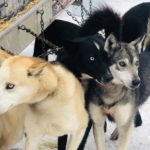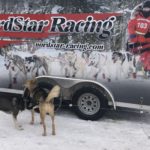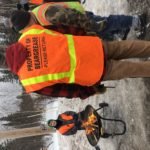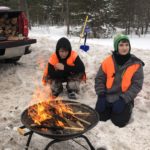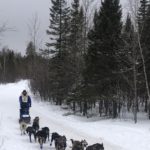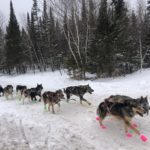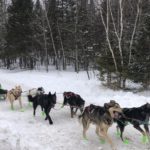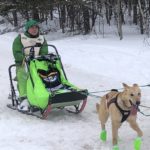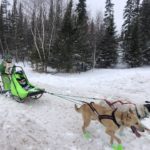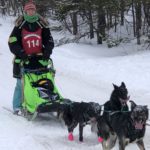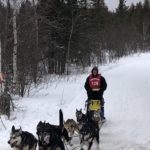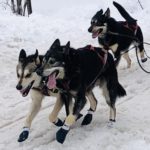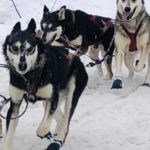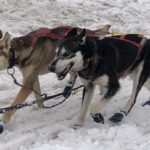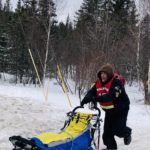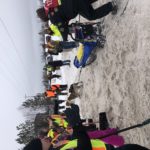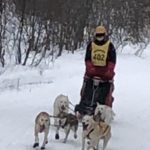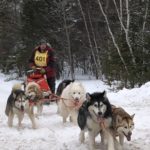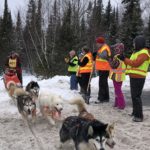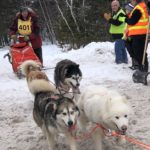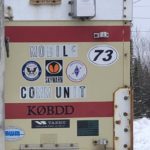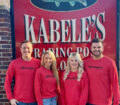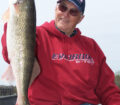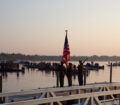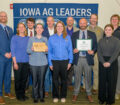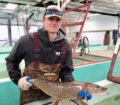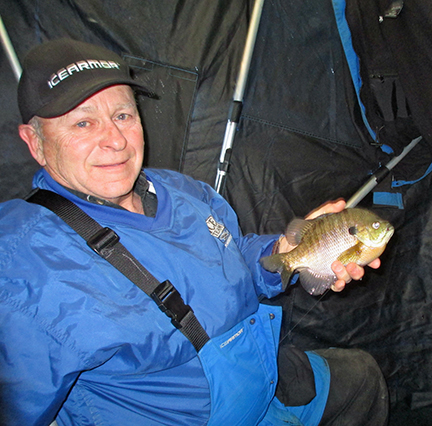By Dr. Michele Devlin
Possibly no other outdoor adventure sport in the world overwhelms the senses as much as a sled dog marathon. The sound of hundreds of yelping dogs eager to run, the smell of snowy fur, the frenetic sight of mushers stuffing their sleds full of gear, and the feeling of pure adrenaline in the air of drivers and their teams is something that is impossible to explain unless experienced in person. Fortunately, Iowans do not need to travel to the remote tundra and mountains of Alaska to watch the Iditarod race. They merely need to plan a weekend getaway along the North Shore of Lake Superior near Duluth, Minnesota, to watch one of the most famous winter sports: The John Beargrease Sled Dog Marathon.
This race spans 300 miles along the rugged hills, frozen lakes, and thick forests of northern Minnesota from Duluth to Grand Portage, just shy of the Canadian border. World-class mushers from around the world and their teams of up to 14 Alaskan huskies compete the last Sunday of every January in this premier North American race, which is the longest in the lower 48 states and a qualifier for the Iditarod in Alaska.
The marathon typically takes four days to complete, and is run in memory of John Beargrease, the Anishinabe indigenous mail carrier who mushed throughout the North Shore in the 1800s, delivering mail to remote villages. Mushers in the modern Beargrease marathon get sworn in as mail carriers by the US Post Office for the length of the race, and carry a coveted leather mailbag with them on their sleds in honor of John Beargrease. While many of the mushers come from the Great Lakes area, Iowa had strong representation from Kevin Mathis with Monona’s “Go the Distance” Kennel.
While participating in the Beargrease as a spectator is a feast for the senses, it is more fun to volunteer. Opportunities range from helping as handlers or veterinary technicians, providing medical care to the animals and mushers, monitoring crossings and checkpoints, welcoming visitors, providing parking assistance, and other needs. Every year, hundreds of volunteers are needed for the marathon, and people sign up months ahead of time to get their favorite duty.
One of the most exciting positions is to serve on the emergency communications team as a ham radio operator. The Beargrease Amateur Radio Club (BARC, pronounced BARK) has several dozen members who have been assisting the race for years. New members are always welcome. We spent a recent weekend volunteering with the BARC team during the Beargrease. Our primary duty was to ensure the health and safety of the mushers and dogs as they made their way through each of the checkpoints and road crossings. BARC helps time, record, and share the progress of each competitor via ham radio, to make sure no one is stranded or injured. We spent half a day monitoring the first crossing, along with a group of Boy Scouts, and got to see each of the dog teams up close as they passed through our checkpoint and gave us all “high fives.” We were also instrumental in alerting the Beargrease coordinators that one racer was nearly three hours behind schedule, and would possibly need assistance. Luckily, the team eventually came through the checkpoint. For ham radio operators, it is a unique opportunity to use their emergency communication talents in a stunningly beautiful frozen wilderness region where man, woman, and animal test their endurance skills in the historic tradition of long-distance dogsledding.
For more information on the John Beargrease sled dog marathon, visit www.beargrease.com. To learn more about volunteering with the Beargrease Amateur Radio Club, visit https://beargrease.com/volunteers/ or www.beargreasearc.org.

